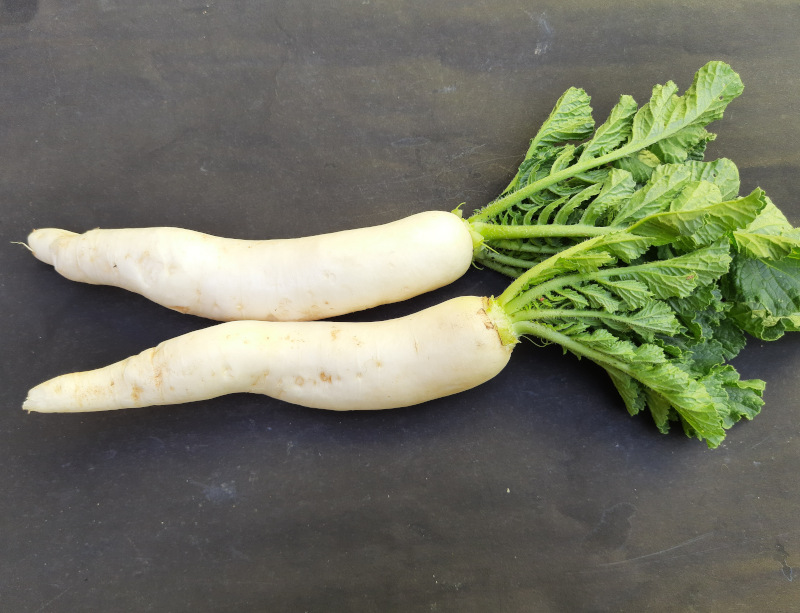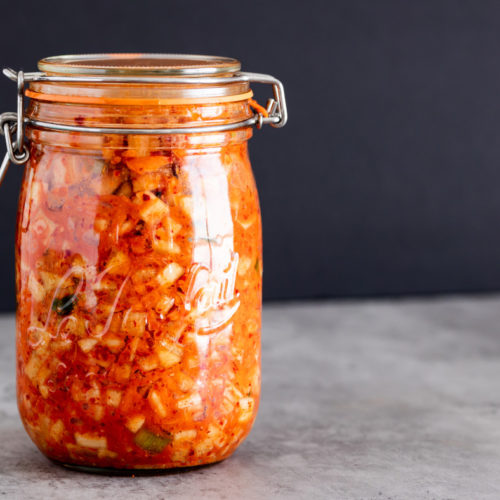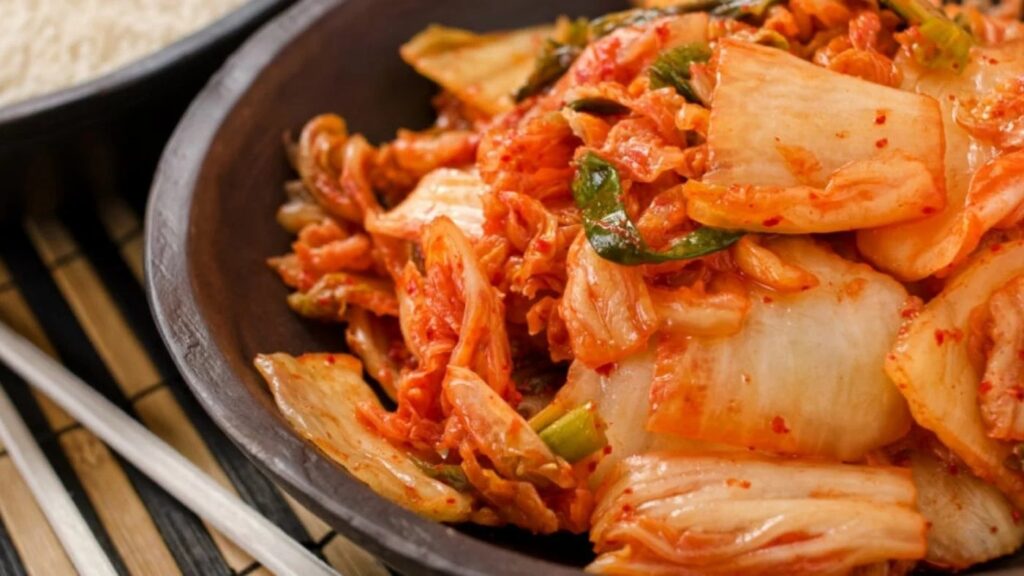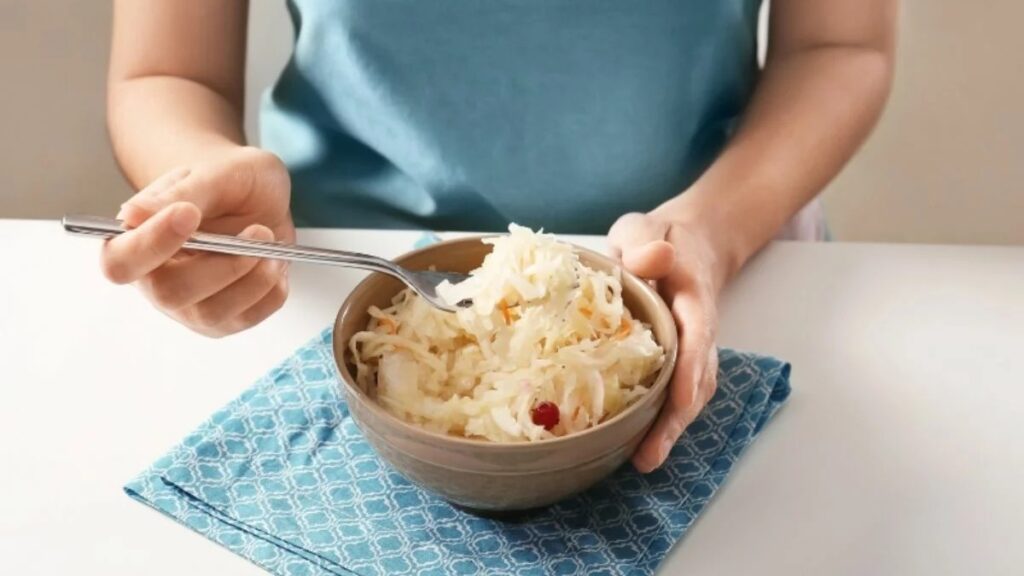Discover a new kimchi to enjoy with this Korean daikon kimchi recipe!
Daikon kimchi is tasty, crunchy, and just spicy enough. Follow this recipe to make it at home.
What Is Daikon Kimchi?
Daikon radish kimchi, also called Kkakdugi in Korean, is a mixture of Asian vegetables fermented in a slightly spicy and flavourful sauce.
Do you know the different types of kimchi? In fact, there are over 180 varieties of kimchi! Although we are used to napa cabbage kimchi, kimchi can be made from many different vegetables.
Daikon radish, also known as Asian radish or daikon, is the star of this kimchi. It looks like a huge white carrot and has a milder taste than pink radishes. Moreover, during fermentation, daikon loses its spiciness, but not its crunchiness!
To complement the daikon, several tasty ingredients that can be added:
- Dried Korean pepper (gochugaru)
- Garlic
- Ginger
- Fish sauce
- Green onions
- Shredded carrots
Use our vegan kimchi recipe as inspiration and add seaweed or even miso!

How to Make Daikon Kimchi?
Like all kimchi, daikon kimchi is prepared according to the basic principles of lacto-fermentation.
After mixing all the ingredients and herbs, you put the vegetables in an airtight jar and wait. That’s it!
This way, the kimchi will ferment, and all the flavours will blend. After a few days of fermentation (and patience!), the vegetables will become tangy and absolutely delicious!
Questions about fermentation? Check out our complete guide to fermenting vegetables.
In our daikon kimchi recipe, the daikon is cut into small cubes, crunchy to the bite. The shredded carrots add a slightly sweet touch and a very interesting texture.
Rice flour also adds consistency to the sauce and makes it easier to coat the daikon cubes. The sauce is smoother and less watery in the mouth, allowing you can enjoy the flavours of all these great ingredients even more!

Carrot Daikon Kimchi Recipe
Equipment
- 1 Large mixing bowl
Ingredients
- 2 daikon radishes (medium)
- 2 carrots (medium)
- 4 tsp salt
- 2½ tbsp Korean gochugaru pepper flakes
- 2 green onions
- ½ tsp ginger
- 5 tsp fish sauce
- 1 tbsp garlic
- 2 tsp brown rice flour
- 4 tbsp water
Steps
Preparation
- Peel the daikon, carrots, and garlic.
- Cut the daikon radish into small cubes of about 5mm (1/4").
- Shred the carrots.
- Chop thinly the green onions, garlic, and ginger.
- In a large bowl, add all ingredients except water and flour.
- Mix ingredients well.
- Let it stand for 15 minutes.
- In a small saucepan, combine the rice flour and water.
- Heat over medium heat, stirring constantly, until it thickens.
- Remove from heat and let it cool.
- Add to vegetable mixture and mix well to coat.
Jarring
- Using the pestle and jar funnel, fill the jar. Press down well after each handful of vegetables to remove air bubbles and liquid.
- Fill the jar up to 3cm from the rim.
- Place the insert on top.
- Close the jar.
Fermentation
- Ferment at room temperature for 7 days.
- Place in the fridge. Can be stored for more than 6 months.
Notes
How to Cook Daikon Kimchi?
Daikon kimchi is traditionally served in Korea as a side dish, the same way as most kimchi.
We also love to serve it:
- In soups
- With noodles
- In poutine 🤩
- As a side dish with meats
- In a grilled cheese
- With an omelette
For more inspiration on how to eat your daikon kimchi, check out our ideas on how to eat fermented vegetables.

